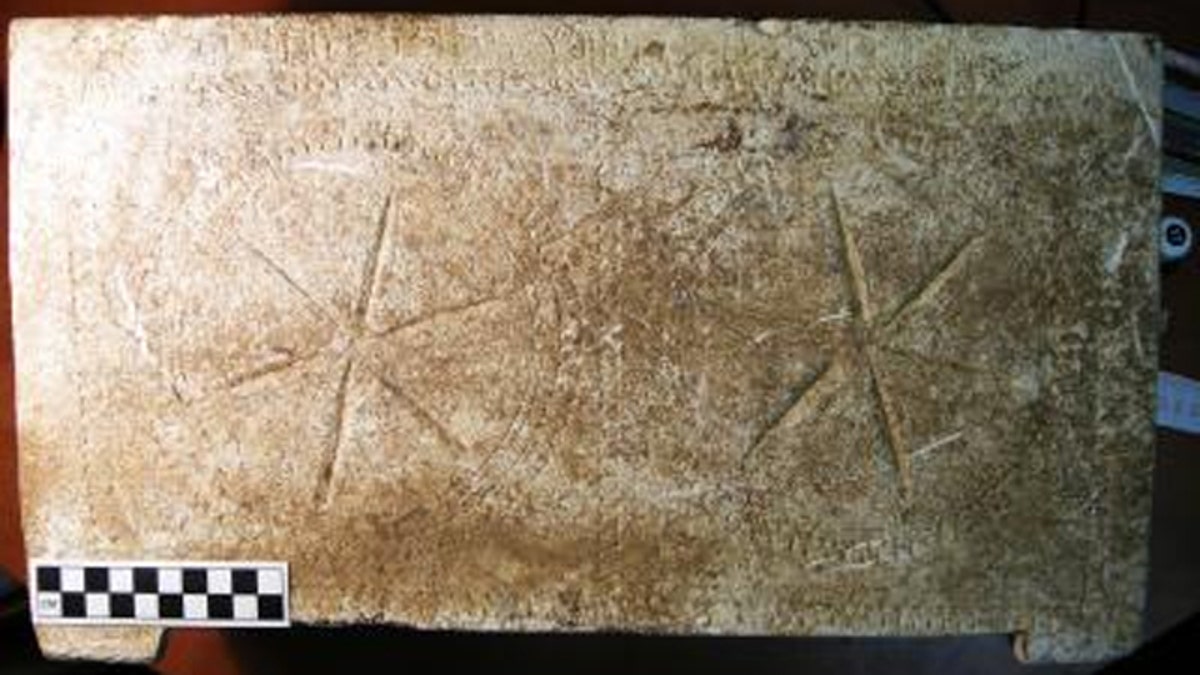
This ossuary is thought to reveal the home of Caiaphas' family. (AFTAU)
Rare inscriptions on a 2,000-year-old burial box may provide fresh insight to the death of Jesus Christ, researchers said.
Called an ossuary, the limestone box could reveal the home of Caiaphas, the high priest involved in the crucifixion of Jesus. The Israel Antiquities Authority, which confiscated the ossuary from looters three years ago, passed it along to Prof. Yuval Goren of Tel Aviv University’s Department of Archaeology who led the authentication effort.
"Beyond any reasonable doubt, the inscription is authentic," Goren said, after conducting a thorough examination of the limestone box, which boasts decorative rosettes in addition to the inscription.
Goren’s findings mean the unusually descriptive inscription sheds light on one of the men behind Jesus’ death. The full inscription reads: "Miriam daughter of Yeshua son of Caiaphus, priest of Maaziah from Beth Imri," naming the deceased within the context of three generations and a potential location.
The Maaziah refers to a clan that was the last mentioned order of 24 orders of high priests during the second temple period, Goren explained. While there are some records of the clan in Talmudic sources that detail their lives after they spread into the Galilee in 70 AD, the reference to Beit Imri gives new insight into the family's location prior to their migration.
Though it is possible that Beit Imri refers to another priestly order, the researchers said, it more probably refers to a geographical location, likely that of Caiaphus' family's village of origin.
The ossuary is thought to come from a burial site in the Valley of Elah, southwest of Jerusalem, the legendary location of the battle between David and Goliath. Beit Imri was probably located on the slopes of Mount Hebron.
It’s not the first time ossuaries have made the news. An inscription discovered recently claiming an ossuary's inhabitant to be James son of Joseph, the brother of Jesus. That revelation made headlines in 2002 -- only to be revealed to be a hoax.
Goren is convinced this one is real -- and he has science on his side.
"When a rock is deposited in the ground for millennia, it is affected by the surrounding environment and affects the surrounding environment," he noted.
Processes such as erosion by acidic ground water and the accumulation of calcareous or siliceous coatings, biological activity such as the development of bacteria, algae, lichens, and the nearby activity of flora and fauna lead to a coating of the stone. Most of these features are impossible to replicate in the lab.
Prof. Goren's finding is reported in the Israel Exploration Journal.
